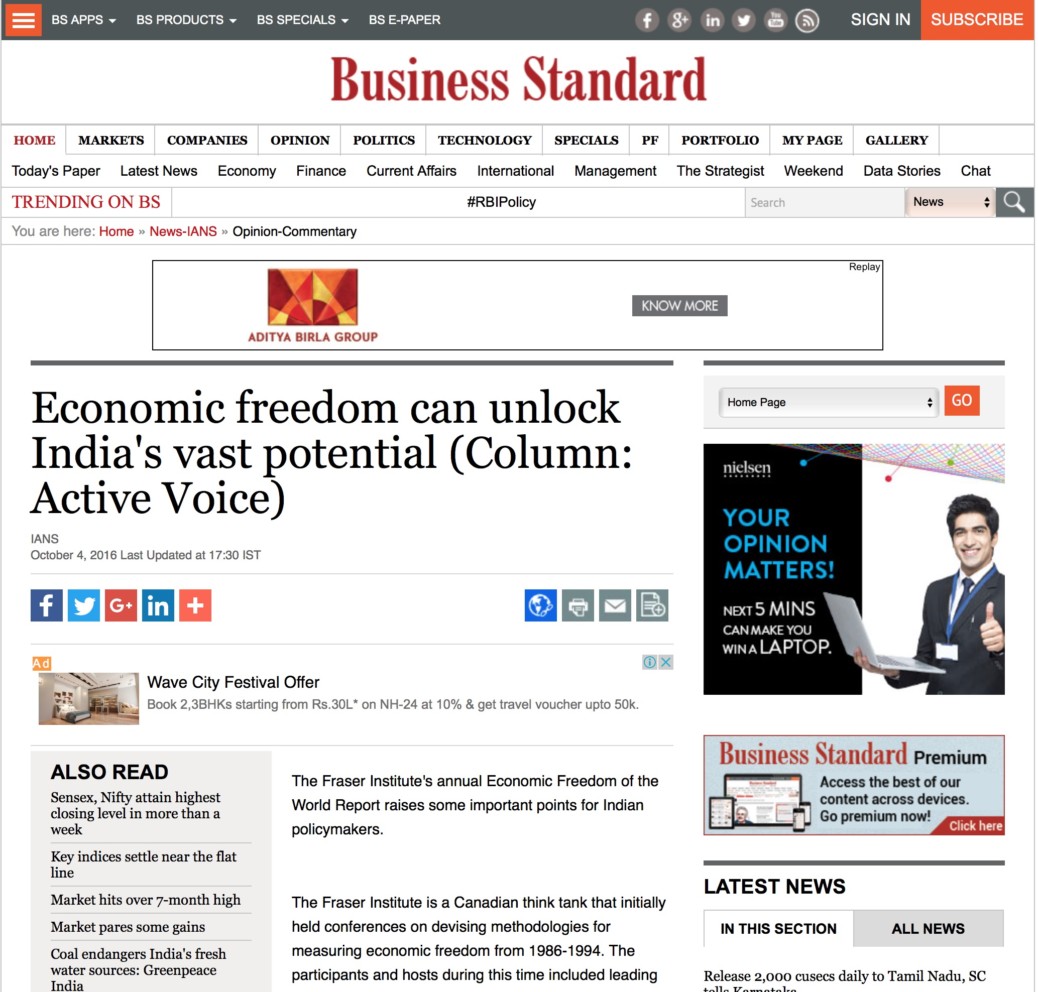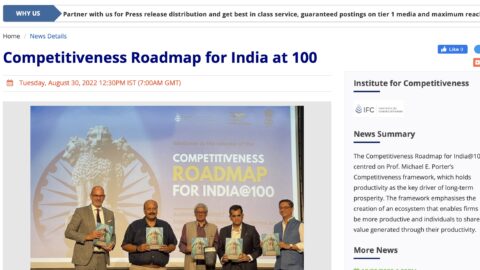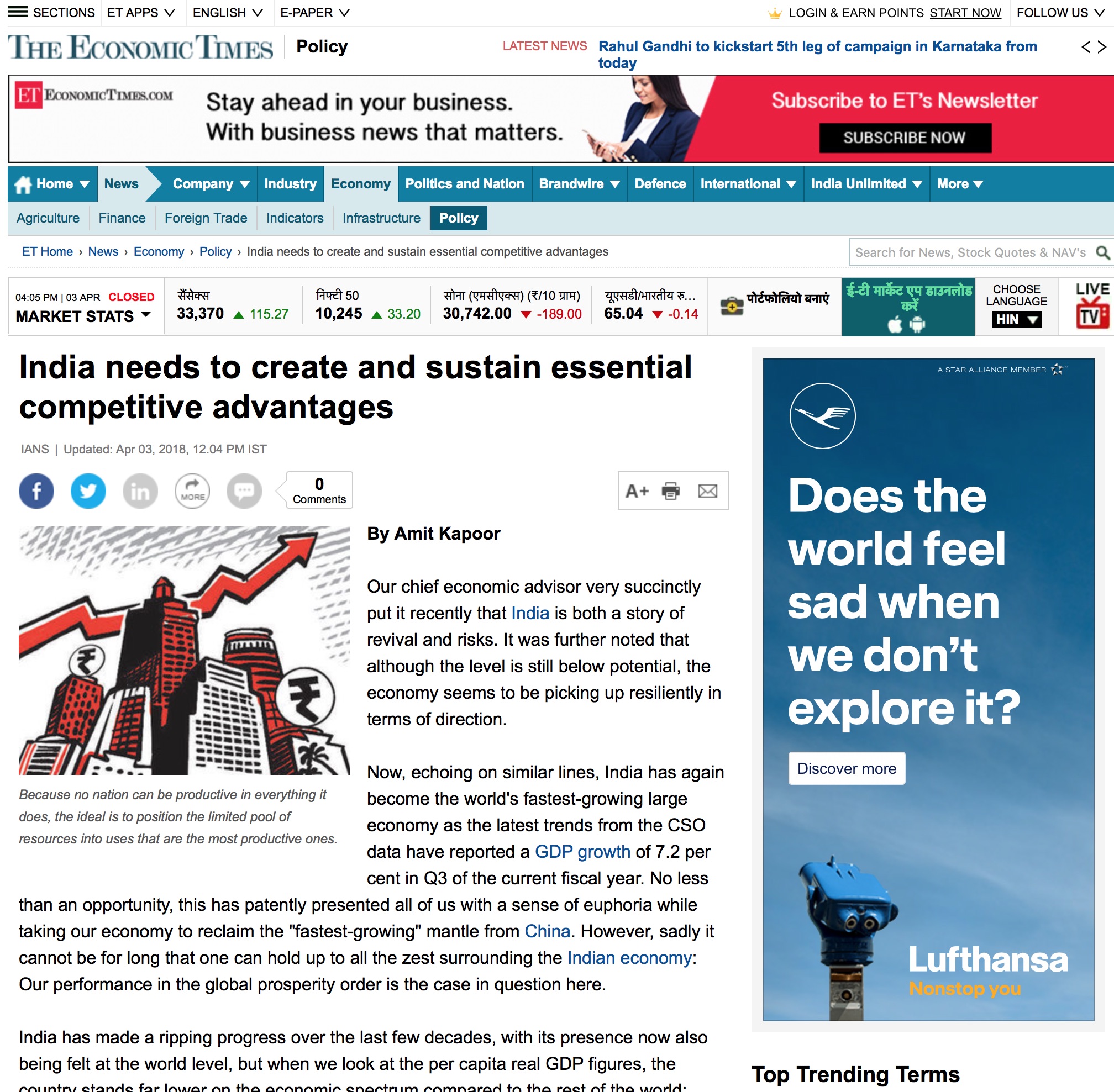Amit Kapoor & Bibek Debroy
What propels a nation’s growth has always been one of the key questions in the policy world. At times, it so happens that this growth tends to be primarily driven by certain pockets with burgeoning economic activity. This may lead to a heterogeneous spatial economic landscape. The argument in favour of a more uniform spatial spread of economic growth within a country is simple – the greater the number of high-performing regions within the nation, greater is the economic growth. However, bringing about this uniformity is the real task, and it requires a different perspective. In the Indian scenario, the country has come a long way in creating uniformity in economic growth across different states, but still has substantial work to be undertaken in this direction. The Competitiveness Roadmap for India@100, developed by Dr. Amit Kapoor, Chair, Institute for Competitiveness, Professor Michael E. Porter and Dr. Christian Ketels of Harvard Business School, mentions that while urban districts account for more than 55% of all wages paid in India and close to 45% of all jobs, they constitute only around 30% of all districts. In a similar vein, nearly half of the total exports are accounted for by two states, Maharashtra and Gujarat. Additionally, states differ on multiple other parameters such as innovation, capital formation, among others. A lot has been discussed on the need to bring about a more even spatial development in the country. However, what India needs is a different approach to understanding what drives growth in particular regions. The competitiveness roadmap puts forth this approach by looking at ‘Clusters’ as a means to enhance competitiveness.
The differences in regional economic performance across India are linked to variations in cluster portfolio and strengths of different locations. To attain evenness in the spatial spread of economic growth, understanding what clusters entail is a prerequisite. Clusters essentially are groups of related and supporting industries located in proximity to one another. As defined by Michael Porter, ‘clusters are geographic agglomerations of companies, suppliers, service providers, and associated institutions in a particular field, linked by externalities and complementarities of various types’. Clusters differ from mere agglomerations of economic activity by virtue of them comprising linked firms and institutions. Two types of clusters can be found operating in regional economies – Traded Clusters and Local Clusters. The classification is based on patterns of geographical presence and operative competitive dynamics within each type of cluster. Traded clusters are considered the engines of growth in a region, some examples of which are – the IT sector in Bengaluru, Video Production and Distribution in Mumbai, Financial Services in New York City. On the other hand, local clusters are present across the nation, with their presence following the distribution of overall economic activity, and catering to local market needs. While local clusters provide employment at the local level, traded clusters tend to be hubs for innovation and higher wages. The competitiveness of a region is enhanced when both kinds of clusters function efficiently.
For decades, clusters have helped gain insights into the economic geography of a nation. India has an opportunity to identify ways of bringing uniformity in the presence of clusters across the length and breadth of the nation. The Competitiveness roadmap shows that a substantial number of Indian districts are yet to build strong clusters, whereas, a few districts harbour a large number of strong clusters. The document also notes that districts with higher average wages see a greater share of their payroll being derived from strong clusters. Furthermore, Indian districts with higher average wages are associated with high-skills intensity. Indian traded clusters are characterised by a higher wage level, higher capital and skill intensity, as compared to the rest of the economy. It is then of immense significance to direct efforts in the direction of building strong clusters. To be able to do so, it is important to first identify the pattern of the existing clusters and assess opportunities for building new ones. The cluster identification methodology brought forth by the Cluster Mapping Project, an initiative of the Institute for Strategy and Competitiveness at the Harvard Business School, is a commendable effort in this direction. The project provides a cluster mapping database of industry clusters and regional business environments in the United States.
India must focus on building a repository of knowledge on location-specific strengths that can then be leveraged to formulate actionable policies for different locations. This would go a long way in developing a growth agenda for specific locations, sectors, and clusters. Regional economies serve as the building blocks of a country. Activating each block by building on the strengths of different locations is equivalent to powering every engine available. Enhancing the presence of clusters and strengthening the existing ones will catapult the Indian economy closer to its ambitions.
The article was published with Mint on January 26, 2023
























